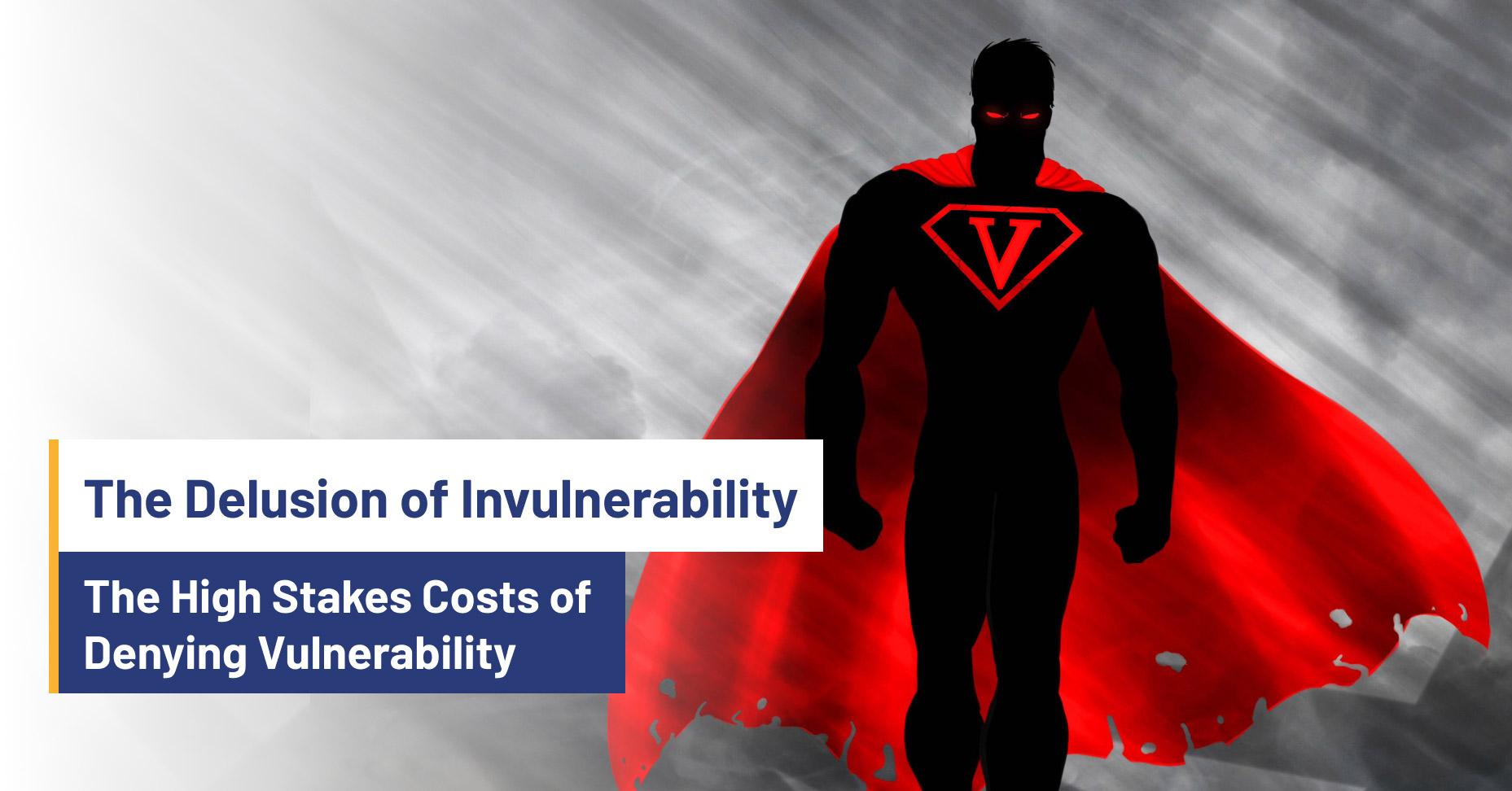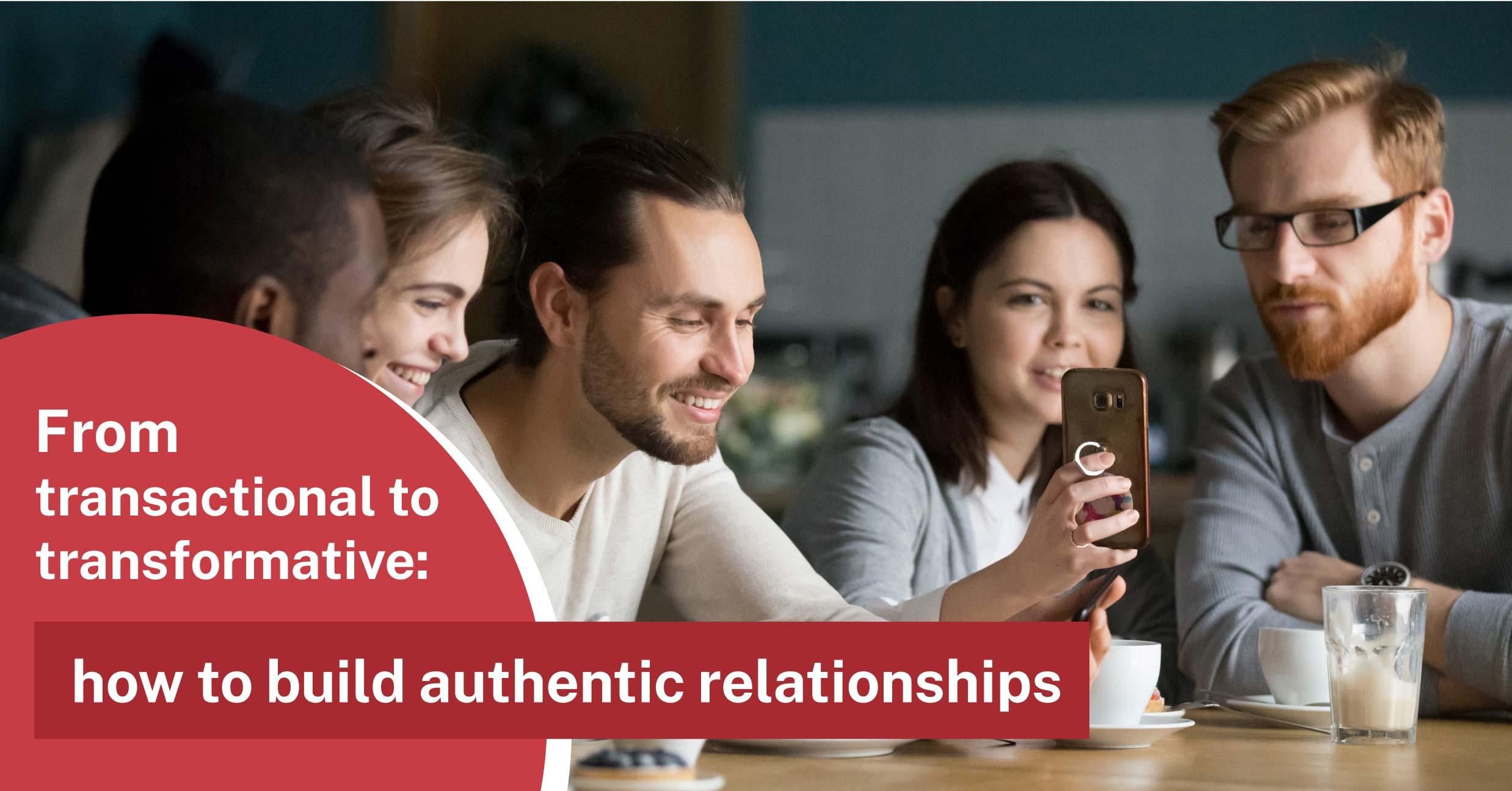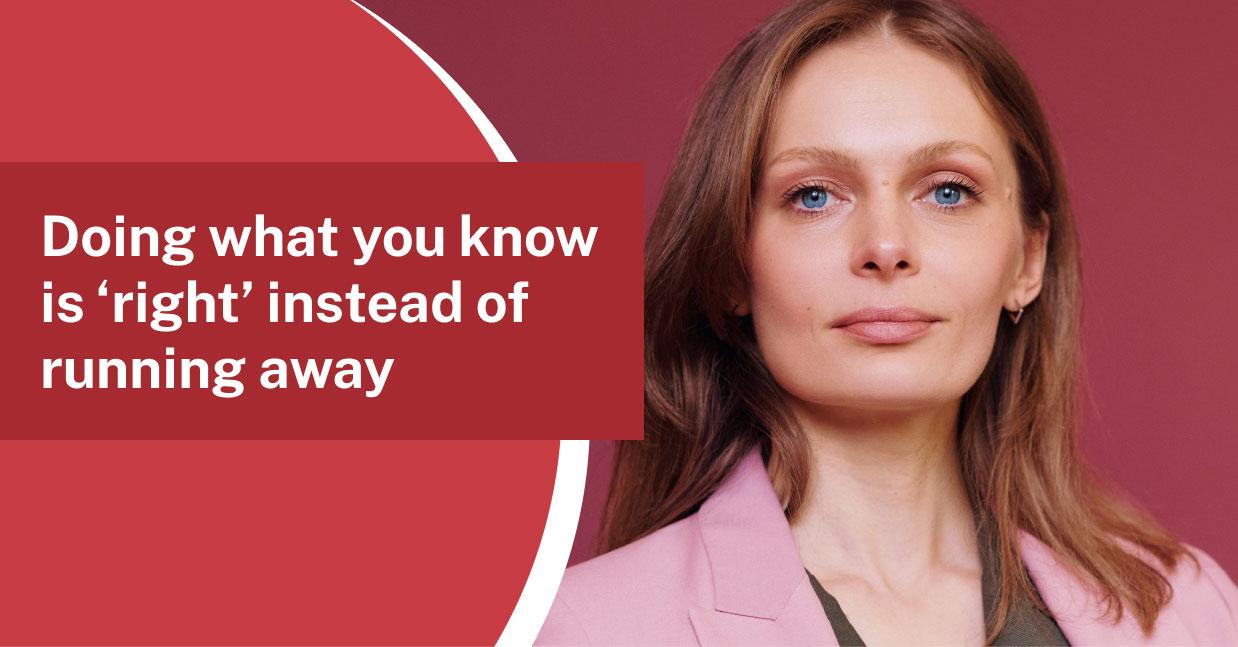Performance and effectiveness are critical to every organisation. While factors like capital, resources, technology, processes and procedures can support organisational leaders to hit their goals, the most important factor is their people. It is no coincidence that high-performing organisations see great value in acquiring top talent and heavily investing in developing them. Too many leaders make the critical error of hiring top talent but then leave them to find their own way to fit into the team and essentially fend for themselves. This often leads to an organisation consisting of several highly talented individuals rather than a high-performing, cohesive and effective team. Furthermore, given that every effective team consists of a number of individuals working together, it is logical to conclude that the integrity and effectiveness of each individual contribute to the integrity and effectiveness of the entire team. It only takes a lack of integrity and effectiveness in one person for the whole team to suffer, which can have severe ramifications for the organisation. In addition, sustained performance and effectiveness rely on ongoing transformation of the business. To thrive as an organisation over the long term, business transformation is critical. Without it, the organisation will be stuck in past-based business models or modes of operation, and can even face potential collapse. While broader business and organisational transformation is desired, our experience and studies have shown that this kind of transformation starts with individual and personal transformation.
In working with and studying people, particularly those holding organisational leadership roles and entrepreneurs, I concluded that while many were exceptionally knowledgeable and effective in their field and industry, they understood very little about human beings, the very beings they must work with to varying degrees, from their business partners and other commercial stakeholders to their employees, contractors and customers. This lack of understanding leads them to make ineffective decisions, which hinders their ability to achieve their objectives. Integrity leads to effectiveness, and effective people build high-performing organisations. In other words, the integrity of an organisation relies on the integrity and effectiveness of its people. The question is, what defines an integrous and effective individual and team? This article explores this question and explains why the so-called 'soft skills' – which are much deeper than just skills, let alone 'soft' skills – are the bottleneck preventing so many organisations from achieving their targets and people at all levels from being fulfilled in their careers or business endeavours. While fulfilling the organisation's mission through effectiveness and performance is the primary objective for organisational leaders, more and more are realising that the wellbeing of individuals and the establishment and nurturing of a thriving culture is integral to achieving this overarching objective, and they are doing something about it.
The value of integrity to an organisation
The most significant barrier to the success of any organisation lies in the integrity of its people. By integrity, I am not referring to the word's common use but to its transcendent and transhistorical meaning of wholeness or completeness, the outcome of having a healthy relationship with a host of deep, underlying qualities intrinsic to all human beings. When the collective integrity of individuals is ignored in an organisation, a range of symptoms can be found, from presenteeism and high rates of employee turnover to a lack of employee engagement, gossip, toxic behaviour and office politics. While there are quick fixes to all of these problems, including costly hiring and firing practices to replace people and performance review processes, such methods alone are unsustainable. Instead, by encouraging and guiding individuals to work on their deeper qualities through a structured process of awareness, practice and transformation, we help them restore or strengthen their integrity and effectiveness, which ultimately contributes to the integrity and effectiveness of the entire organisation along with their ability to undergo broader business transformation. This is not just about self-improvement. As leaders, we should not avert our gaze from the fact that the company's bottom line is closely linked to the performance of each one of our people.
Emma and Wendy are co-founders of a thriving technology startup. However, this was not the trajectory from day one. Although they had the resources that allowed for a decent runway ahead of them in the early stages, they had some massive challenges to navigate and overcome. While Emma and Wendy had raised investor funds and were hiring on overdrive, the only thing that was growing in the business was the level of dysfunction. "We were hiring some of the best talent in the market, but something was amiss, and we couldn't put our finger on it," said Wendy. "When you hire, you do so expecting your output to go up. For us, it was going the opposite way." Their senior technical staff constantly argued over the optimal way to build the product. Rather than directing their focus on building the technology, meeting after meeting would go by with little to marginal progress. Other team members did not feel it was their place to intervene, and they wasted precious time and effort while their superiors disagreed on the best way forward. The company was in the red, churning through significant outgoings every month but not bringing in the revenue needed. I will explain how the co-founders dramatically turned this situation around shortly.
Unless organisations support their people to grow and effectively build the business, they will be left with nothing but a liability. This is more than just a personal point of view, but rather the culmination of many years of study and collaboration. My team and I studied, interviewed and worked closely with hundreds of entrepreneurs, startups, organisational leaders and investors from all corners of the globe to discover the behavioural patterns and qualities that determine success or failure in business. We also examined many forms of popular thinking and theories about human beings. The aim was to answer the question, how do you cause, build and develop effective, high-performing individuals and teams consisting of leaders of influence? Let's begin with a few of today's popular approaches to working with people.
The existing state of affairs
There are various existing approaches when it comes to knowing and understanding human beings. Personality Type Theory, for example, categorises people into different personality types. This approach treats human beings as fixed objects doomed to be dealing with how they currently are, including their 'shortcomings', for life. Some 'experts' in the field even suggest that we should learn to 'deal with' our dysfunctional sides rather than go through a process of transformation. The point is that we are not fixed objects hardwired to be how we currently are forever. This is not a personal opinion. As human beings, we are capable of and do transform. People transform their health, body shape, wealth, fitness, skills, etc., and organisations are capable of doing the same with their people on a collective scale.
Behaviourism is another approach favoured by many. Behaviourists primarily focus on individual behaviours, or at best behavioural patterns and habits. The issue with Behaviourism is that it ignores what actually drives our behaviours. Instead, this approach encourages us to correct individual dysfunctional behaviours, patterns and habits at best and prepare our environment to be conducive to this. Furthermore, this approach begs the question: who defines which behaviours are acceptable and which are not? Correcting individual behaviours is like watering every leaf of a tree. It simply doesn't work, particularly in the long run; this fact has been scientifically proven.
Imagine you have an employee who is constantly arriving late to work. You may tell them that their behaviour is unacceptable. As a leader, you may even put them on a performance review and force a change in the behaviour. But that will not change the real reason for repeatedly arriving late to work. Maybe they don't care about the job or lack commitment and responsibility. Perhaps there is another underlying cause that they are not open and vulnerable enough to share with you. The point is that there are always deeper qualities shaping our behavioural patterns and driving our behaviours. Unless you become aware of these underlying qualities within yourself and others, you will forever be reacting to situations as they arise and applying Band-Aids rather than being proactive and nipping them in the bud. That would be like only seeing a doctor for a pill rather than a series of tests to reveal the cause of your pain, or only going to the mechanic when your car breaks down rather than having it regularly serviced to prevent breakdowns.
Despite this, Behaviourism is a discipline that continues to dominate within corporate cultures, organisations and even many societies. The problem is, while you may be able to train a pigeon through conditioning, once she finds an opportunity to escape from her environment, her behaviours will revert to their original state. Imagine how it is with an intelligent human being! This is hardly surprising when you consider that in the business world, human beings are referred to as 'resources', essentially reducing each individual either to a commodity that depreciates over time and can be traded or to nothing more than their immediate functionality. When human beings are seen – even by themselves – as resources, only their surface behaviours are observed, leaving their deeper qualities hidden and therefore ignored. This commonly leads to reduced productivity levels, which has dire consequences for an organisation. Failing to pay attention to an individual's deeper qualities can also prevent them from living a fulfilling life. Why do we need to care about the deeper, hidden qualities of those who work in our organisation? Aren't the observable behaviours all that matter? The answer is twofold. Firstly, a person's behaviour only partly reveals who and how they really are and secondly, it is those deeper qualities that drive their observable behaviour, performance and effectiveness. I trust this answers the question of why we should care about deeper qualities as leaders.
Sitting on the extreme end of the spectrum are the so-called 'gurus' and some motivational speakers who believe living a fulfilling life hinges on positive thinking, encouraging their audience to adopt a romantic view of the world and see life through rose coloured glasses. In their opinion, everything is mutable, and human beings can live purely on the basis of how they define themselves, which is their choice. To think that all you need to do is think positively for opportunities to line up and land in your lap is not only delusional, but it can also lead to suffering and dysfunctionality. Then there's the Postmodern view which declares that the subjectivity of human beings makes us virtually unstudiable from a scientific standpoint. This has been reiterated by many renowned thinkers, from Nietzsche and Sartre to Derrida and Foucault. While I subscribe to some of their views, I know, through my studies and observations, that human beings share many qualities that can be both studied and measured.
What drives our behaviours and actions?
The approaches touched on are not entirely devoid of merit. However, they all miss fundamental requirements that facilitate transformation. That's primarily because, while these and many other disciplines of mainstream modern psychology focus on fixing or refining individual behaviours or, at best, behavioural and cognitive patterns, they ignore the deeper, more subtle, yet far more important parts of us that drive our behaviours. I call these 'Aspects of Being'. It is those deeper Aspects of Being and drivers of our behaviours that I set out to define and map out, resulting in a radical new paradigm which I call the Being FrameworkTM.
While it is impossible to elaborate on every aspect of this comprehensive framework in a single article as I have done in my book, BEING, my aim is to depict a straightforward picture of what it is, how it describes human behaviour, its influence on our decisions and behaviours and what it brings to the table in terms of practical application in a business and organisational context. Put simply, to change the behaviour and outcome sustainably, we need to become aware of and address the deeper qualities that make us who and how we are and cause how we show up in the world. Our Aspects of Being are like the parts that make up the engine that drives the system. To put this into context, our studies with business leaders and entrepreneurs who failed to achieve their objectives or are no longer in business found that their failure was not due to a lack of capital, technology or the right techniques or strategies; it was because of who and how the leaders and their people were BEING. These deeper qualities largely influence our decisions and choices and drive our behaviours. Ultimately, those qualities determine how fulfilled and accomplished we become as individuals, and this has a flow-on effect on the integrity and effectiveness of every team and organisation.
Aspects of Being are qualities common to all human beings but show up differently in each of us. Why? Because we relate to them differently due to our temperament, upbringing, environment, opinions and beliefs, amongst other factors. They directly contribute to how we participate in life and how others see us. They either lead us to live a life of accomplishment and fulfilment by tapping into and expressing our Unique Being – who we were born to be – or to a lifetime of disappointment and regret. In the work environment, the diversity of individuals leads to their unique contribution to the organisation when encouraged and given space to be self-expressed. On a collective scale, this commonly generates unique offerings desired by the target market and exceptional ways of serving people, leading to a community of delighted loyal customers who will happily refer the organisation to others.
A radical new approach to seeing human beings
The Being Framework and its associated ontometric measurement tool, the Being Profile, adopt an ontological ('let's get real') approach to understanding human beings. They were designed in response to our study of entrepreneurs, startups, leaders and investors, including many of the world's top achievers, to discover the behavioural patterns and qualities that determine success or failure and fulfilment or lack thereof. From an organisational perspective, the framework and measurement tool provide access to the lens and language to know, see, assess – without moral judgement – and articulate the drivers of a leader's behaviours and actions and those of the people around them. It is not about positive thinking or affirmation, and it's not a quick-fix recipe for success. Instead, it draws our attention to the extraordinary power of discovering and leveraging the qualities (Aspects of Being) we have a healthy relationship with and casting light on and transforming the qualities with which we have an unhealthy relationship. Gaining a deeper understanding of human beings – themselves and others – in this way enables leaders to make more effective decisions, know when to say their real yeses and noes, be more fulfilled, and build more integrous, effective and engaged teams. This, in turn, dramatically increases the likelihood that the organisation will achieve its objectives.
Let's return to our case study of tech startup founders Emma and Wendy, who were struggling with their senior technicians. They had hired these technicians for their significant qualifications and expertise, and the founders were paying a premium salary for them. However, the company was constantly running in the red due to internal dysfunctionality. Knowing that change starts at the top, both founders completed a Being Profile assessment and individual debrief sessions. With newfound awareness, they worked on the underlying qualities they discovered were blocking them and made changes within the team. They also conducted fortnightly team sessions during which they shared the Being Framework with every team member. As a result of the changes made around key Aspects of Being, the company grew from a team of approximately 50 to 90 in two years and now serves customers in over twenty countries. Read the full case study here. The point is, no matter how qualified and experienced your people are when you hire them, if they aren't led effectively and don't work cohesively as a team, the outcome will be less than desirable. Furthermore, organisational change must always start at the top to be effective. You can't expect your people to transform if you aren't prepared to transform yourself first.
What is the Being Framework?
The Being Framework, shown as a helicopter view below, is an ontological approach towards understanding what it is to be a human being, how you are being and the consequences of that in the context of your life and/or organisation.
The framework incorporates the ontological model, explained below, the Transformation Methodology and the Being Profile assessment tool. The Transformation Methodology was designed on the premise that, as human beings, we are not fixed objects destined to be how we are forever. We can and do transform. The methodology adopts an objective and iterative approach to guide individuals through a series of discoveries, preparations, exercises and practices intended to ultimately lead them to transform the Aspects of Being with which they have an unhealthy relationship. It has enormous benefits for organisations, particularly when implemented from the top down. A leader's transformation creates a powerful ripple effect that can extend throughout the team when facilitated and actively supported. The Being Profile is the framework's core assessment tool. It is the world's first and most comprehensive and effective ontological profiling tool for performance, effectiveness and leadership by which all Aspects of Being can be accurately measured.
Zooming in to the ontological model layer below, this is where I have broken down the Being Framework's 31 Aspects of Being into four distinct layers: Meta Factors, Moods, Primary Ways of Being and Secondary Ways of Being.
The Being Framework Ontological Model
Meta Factors are the high-level qualities of awareness, integrity and effectiveness. They are the three factors that influence performance, power and ability to lead. All Aspects of Being contribute to or hold us back from integrity and effectiveness. And all change begins with awareness.
Moods are the qualities that give context to our participation and are the channels through which we disclose ourselves to the world. While some may regard being vulnerable, for example, as a negative trait, particularly in a business context, the opposite is true. To be vulnerable in business means you are open and not prone to putting up your guard. The same is true with fear. The healthier your relationship with fear, the less it will prevent you from taking considered risks and moving forward, a critical quality in business and organisational leadership.
Primary Ways of Being distinguish the fundamental ways through which we project the true manifestation of who we are and how we experience ourselves to be in the world. These primal qualities – they are primal because we all have them but relate to them differently – impact our behaviour, performance and the subsequent results we produce. They are deep and subtle and, therefore, not always clearly visible in our behaviours.
Secondary Ways of Being bridge the gap between our deeper qualities and how we present ourselves to others. They are readily observable as we project our Secondary Ways of Being through our decisions, actions and behaviours. An example of a Secondary Way of Being is assertiveness, a Way of Being that is commonly misunderstood.
Being, in action
A senior manager regularly mistreated many in the organisation, and complaints were frequently made about him. However, because this senior manager held an important role in the company, the leadership team would commonly let issues slide, and consequently, he would get away with his unacceptable behaviour. The leadership team's failure to take employee complaints seriously created a perception that the senior manager was receiving special treatment. This led to a lack of trust and respect in their leaders because they were not seen as assertive, fair and just. Some employees resigned, while others lacked care, responsibility and commitment, creating dysfunction and presenteeism within the team. It wasn't long before all of this was reflected in the company's bottom line. It required a level of vulnerability and courage for the CEO to confront the senior manager in question assertively. Following coaching based on the Being Framework, the CEO offered to support the senior manager to transform his Ways of Being, knowing this would ultimately lead to behavioural change. However, the senior manager's lack of vulnerability prevented him from taking the offer of support on board, and he tendered his resignation. From a technical point of view, the senior manager's departure was a loss to the business. However, the actions of the CEO restored faith and trust from employees in their leaders, leading to improvements across the board.
The above scenario, where leaders turn a blind eye to negative behaviour from someone they believe is integral to the organisation, is quite common, particularly in large corporations. Ironically, many leaders consider their submissive behaviour a virtue, hiding its dysfunctionality and lack of workability under fancy terms like professionalism, pacifism, being considerate or non-confrontational, creating a safe work environment or trigger-free zone, and so on. No matter how you present it or label it, this type of behaviour gets in the way of effective communication. Trust will be compromised, the team's integrity will be undermined, and this will negatively impact its effectiveness. Ultimately, targets and revenue goals aren't met, and customers and shareholders are left disappointed and disgruntled.
Clipex is an Australian-based global company that specialises in fencing and stockyard solutions for the agricultural sector. Their annual budget is driven by the company's forecasted revenue. All planning, from organisational structure to expenditure, flows from this. The executive management team reviews and agrees to a budget after input from the various departments within the company. The sales executives agreed to a target for one year's forecast, and the annual budget was subsequently formed around this. Joe Ernst, Clipex's COO and Director of People and Performance, said, "As the year progressed, it was apparent that the target was not going to be achieved; it would be short by $10-$15m. The result of course would have an impact on all facets of the business.” Later, the executive who had initially agreed to the target declared that he never thought the target was achievable. However, he felt that it was a figure the stakeholders and executives wanted to hear, so he "just went along with it". This is an example of an individual who either chose to ignore or was unaware of his decision's impact on the business and staff.
Clipex leadership executives are advocates of the Being Framework and have actively implemented it into their organisation. Joe is so invested in the paradigm that he took it upon himself to learn everything he could about it and become qualified in its practical application. He completed the Being Profile Accreditation Program to learn how to use the measurement tool and subsequently enrolled in the Thrive Coach Training Program to become an accredited practitioner within his organisation. He is currently undergoing the Being Mastery Program, a one-year program that delves further into the Being Framework and its application. In addition, a dedicated number of coaching hours led to the Being Framework becoming part of the organisation’s language and culture, Joe said, “It [coaching] is ongoing and Clipex has recognised how vital this is by investing – as part of the budget – in having myself trained as a dedicated coach within the business”. When Joe and the other executive management team members referred back to the sales executive's Being Profile, it was clear to them that he had an unhealthy relationship with vulnerability and authenticity. Joe said, "When I now look back to the Being Profile of the executive, it is clear that his relationship with vulnerability and authenticity were not as healthy as it could be. What happened always had the potential to happen. As we learn more about the benefits of the Being Profile and become more skilled in utilising its power, we, as a team, have become more responsible to be aware of the shadows and their potential impact." This newfound clarity around the sales executive's Being shed light on why there was such a significant gap between the forecast and budget. It also highlighted the real and dangerous impact an unhealthy relationship with vulnerability and authenticity can have on an organisation.
Months later, they realised they were up against a single month's target that had to be met to avoid major impacts on the business. All leaders responded to this seemingly impossible target by rolling up their sleeves and pitching in with the team. The CEO even operated a forklift over this critical period to assist on the ground. From a Being Framework perspective, the leaders made a conscious decision to tap into their Aspects of Being as a team and be committed, vulnerable, responsible, authentic, resourceful, etc. This led to the target being hit. Read the full case study here. Ashley Olsson, Founder and CEO of Clipex, summarised his view about the Being Framework and my book, BEING, by saying, “This work is pivotal in helping people become aware of the truth about themselves and for them to enlivened, made aware to the truth about themselves, to be challenged to begin walking on the path of ruthless discovery, to desire to become integrous, and stop living an illusion”.
It is not uncommon for leaders to deliberately avert their gaze from financial reports in board meetings, for example, despite the reports highlighting the undeniable truth. They pretend nothing is wrong until they can no longer avoid the issue and the organisation pays the price. Sacrifices are made, including the livelihoods of team members who the company can no longer afford to retain. Reality does not care about intentional ignorance or willful blindness. In working with many organisations, my team and I have witnessed liquidation, family businesses falling apart, divorce, people losing their jobs and bankruptcies. These all lead to the wastage of resources, time, capital, and talent.
To illustrate this point further, let's look at an example of one company director who dealt with resentment and its impacts on his organisation across a range of transformational situations. Before being exposed to the Being Framework, the director averted his gaze from the fact that his resentment towards other team members would consume a large portion of his attention for weeks, sometimes even months, and the opportunity cost of that resentment to the business. Instead of dealing with the reality of the organisation's challenges, including responding to the pace of technological disruption and the need for innovation, the director was consumed by resentment. By working one-on-one with an ontological coach and using the Being Framework to guide their enquiry, particularly in developing his conception of the qualities of forgiveness and assertiveness, he brought about substantial personal transformation. This resulted in his ability to relinquish his resentment in a matter of days and sometimes hours.
The consequential impact of the director's transformation was that, rather than responding to high-pressure situations with procrastination or victimhood, he effectively directed his energy towards transforming the business. A key outcome of his personal transformation involved the director leading the successful research, planning, and launch of a new innovative product that allowed the company to tap into a new market and produce a new revenue stream amidst significant disruption and instability within their industry. This is an example of personal transformation laying the grounds for business transformation. If we zoom out enough, not addressing the Being of individuals and teams has a significant impact on the GDP of an entire nation! All of this wastage and despair is avoidable because, as human beings, we can and do transform.
The Being Framework has now been integrated within organisations in various locations worldwide. My team and I are continually gratified by the feedback we receive from leaders who have adopted the paradigm and the remarkable results being achieved. In addition to the examples referred to in this article, there are countless other similar stories. For instance, when Jason Williams, a Director of Willship, an Australian-based international logistics company, introduced the Being Framework and Being Profile to the entire organisation to improve team engagement and performance, he told us they gained a deeper insight into who and how each person was being, including themselves, for extraordinary behavioural change and results. Another of Willship’s Directors, Nick Proctor, said that at the beginning, “it felt like it was me talking ‘at’ everyone, rather than getting any engagement from the team”. After completing training in the Being Framework with the whole team, Nick commented on the changes he observed, “Everyone’s eyes have opened up to the fact that they mean a lot to the business, their input matters and what they have to offer is important for all of us”. Access Willship’s complete case study here. And when Steve, an experienced entrepreneur building his second high-scale technology-based company, and his co-founder Julianna used the Being Framework to get the best out of themselves and their team, they told us it enabled them to avoid the growth pitfalls into which many others fall. Access Steve and Julianna’s case study here.
Today, we have an exponentially growing community of more than 100 coaches and consultants adopting and promoting the framework in their work with individual leaders and entrepreneurs and, most importantly, throughout entire organisations. Many of the organisational leaders we work with have embraced the Being paradigm so fully that they have become accredited Being Profile practitioners to lead their teams through the process and integrate the Being conversation and principles in their day to day practices.
Greg Aldridge, CEO of EveryMan Australia, a not-for-profit organisation that supports men with high and complex needs, initiated the adoption of the Being Framework, not only in his organisation but also within the context of a partnership with Toora Women Inc., a not-for-profit that supports women living with homelessness, domestic violence and drug and alcohol issues. Over the last two years, Greg and Director of Alcohol and Other Drug Services at Toora Inc., Rebecca Wood, have undertaken training in the Being Framework and are practising it within their organisations with exceptional results. In the Being Framework, the core focus is not to change team members' behaviours one at a time. Instead, multiple behaviours are impacted by transforming a person's Aspects of Being. Greg observed this as his team undertook the training and practised the Being Framework under his guidance. He said, "I made a promise that I will make an organisation in which people will love to come to work every day, and there have been so many times over the last eight years that have been heartbreaking to me not to be able to fulfil on that. But what I've seen in the Being Framework is that it is a methodology to speak to every single person who works for us to create leadership." Click here to read the full case study. Greg and Rebecca are now accredited Being Profile Practitioners and, like Joe Ernst from Clipex, are currently undergoing the Being Mastery Program.
Conclusion
The most critical factor for an organisation to achieve its objectives is its people. The highest performing organisations in the world understand this and invest heavily in their ongoing development. Their leaders know that the company's performance and ability to undergo business transformation rely on the integrity and effectiveness of every individual they employ. Leaders who struggle with this concept understand very little about human beings, which is not necessarily their fault because human beings are complex. Many turn to existing approaches, such as Personality Type Theory and Behaviourism; however, these approaches either categorise human beings as fixed personality types or only address individual behaviours, patterns and habits. Both miss the underlying qualities that drive our behaviours and fail to accept the scientifically proven fact that we all have the capability to transform. The Being Framework defines, clearly articulates and maps out the underlying qualities that drive our behaviours and actions. Ultimately, those qualities determine how fulfilled and accomplished we become as individuals, and this has a powerful flow-on effect on the integrity and effectiveness of every team and organisation. Importantly, all organisational change starts at the top. Our case studies revealed the potential and real difference when the Being Framework is successfully applied. It is important to note that in each instance, the implementation of the Being Framework was supported by ontological coaches trained in the framework, including the Transformation Methodology and Being Profile. In short, how every person in an organisation is being, from the leaders to all team members, is directly linked to the organisation's success.
To gain a deeper understanding of the Being Framework as it applies to real-world organisations, I recommend you read the full case studies below:
Willship
Clipex
EveryMan Australia and Toora Women Inc.
Emma and Wendy, Tech Startup Co-founders
Steve and Julianna, Tech Startup Co-founders













